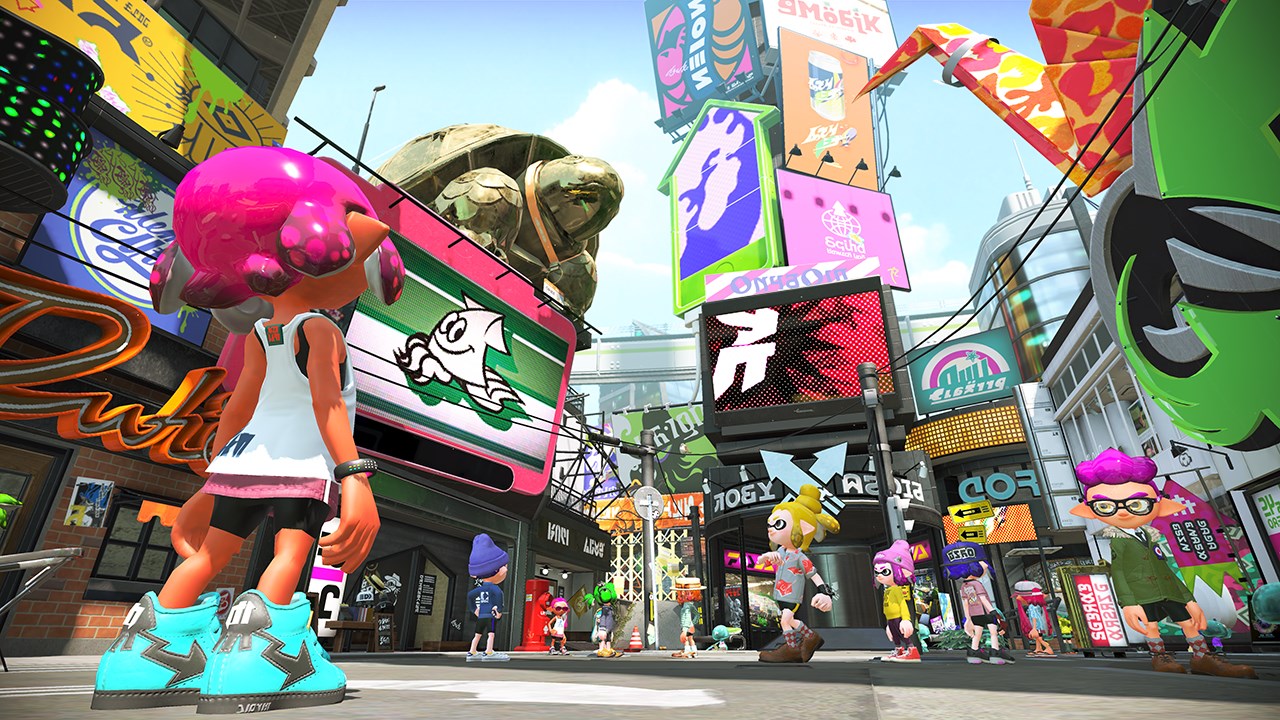The first Splatoon on the Wii U was one of 2015’s freshest games. It took the multiplayer online shooter genre and completely reinvented it, applying that Nintendo magic to create an accessible, original but still deep experience. At its core lay a solid set of innovations that was only hampered by the somewhat limited scope of the original game. It opened up the entire genre of shooters to a new audience with a system that allowed anyone to contribute to team success, whatever your skill level is.
Fans have eagerly awaited a sequel ever since, and now with the release of Splatoon 2 for the Nintendo Switch, we finally have our chance to see how the game has evolved. Has it moved past the limitations of its predecessor, or is this a re-release under a different name? Let’s find out.
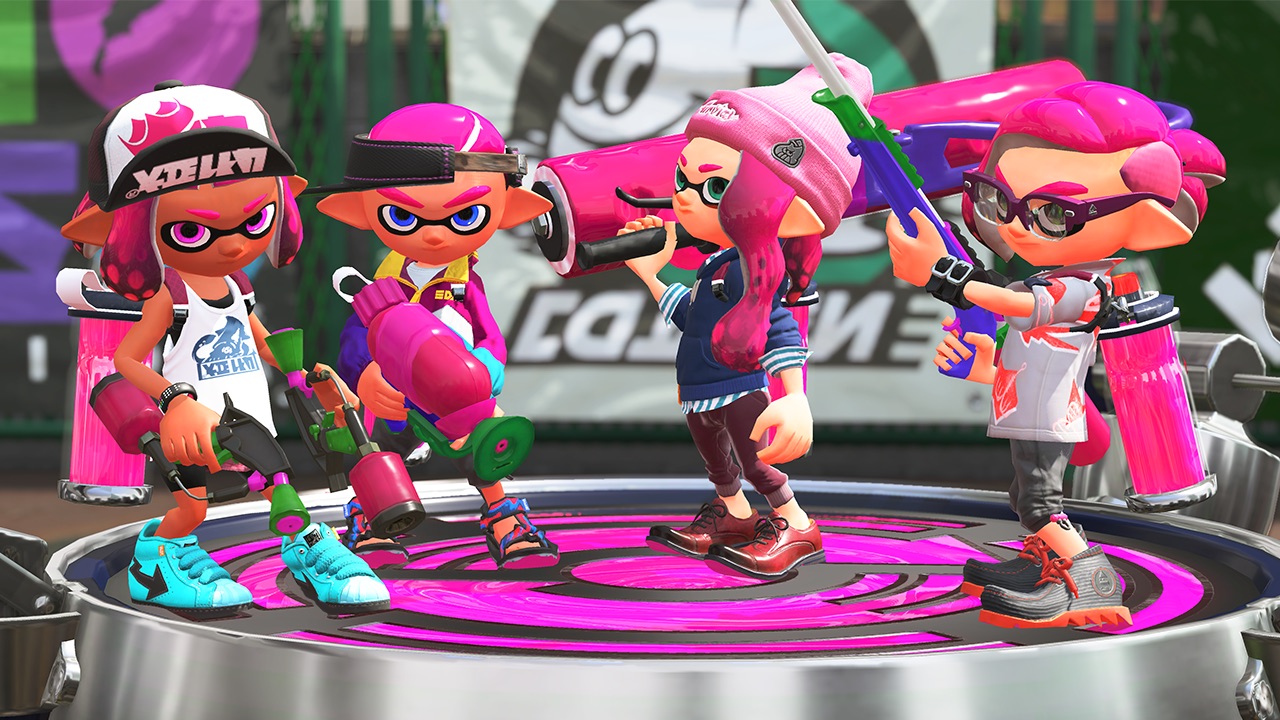
Splatoon 2 features the same basic layout of the original, and will be instantly familiar to veteran players. From a central hub you can purchase new gear, enter single player or multiplayer, post messages and drawings and see avatars of other squidkids. Fundamentally this is the same game, but with enough tweaks, upgrades and additions to justify its “2” moniker. It would have been easy to port the original game to the Switch, a la Mario Kart 8 and Legend of Zelda: Breath of the Wild, but I am glad there is enough for veteran players to warrant an upgrade.
The single player campaign was a vastly underrated part of the first game, and is a whole new experience. As in the first, you must completed 6 levels in each world to face the boss. You must shoot, grind, squid and jump your way through a huge range of wacky levels that are bursting with new ideas that are as quickly thrown out as they are introduced. It also introduces a couple of new mechanics. For example, you can now grind on rails of ink rather than just travel through them. This opens up new shooting and jumping possibilities, making the Levels that focus on them more like like a platformer than a shooter. Don’t expect anything revolutionary than the standard Nintendo game design pattern though (as outlined in this excellent video by Mark Brown) but when they’re bursting with more fresh ideas and mechanics than most of the rest of the industry combined, they’re still enormously enjoyable. Single player also serves as a good introduction to the game as a whole for players new to the series, from how to move, to positioning, using your weapons and fighting enemies.
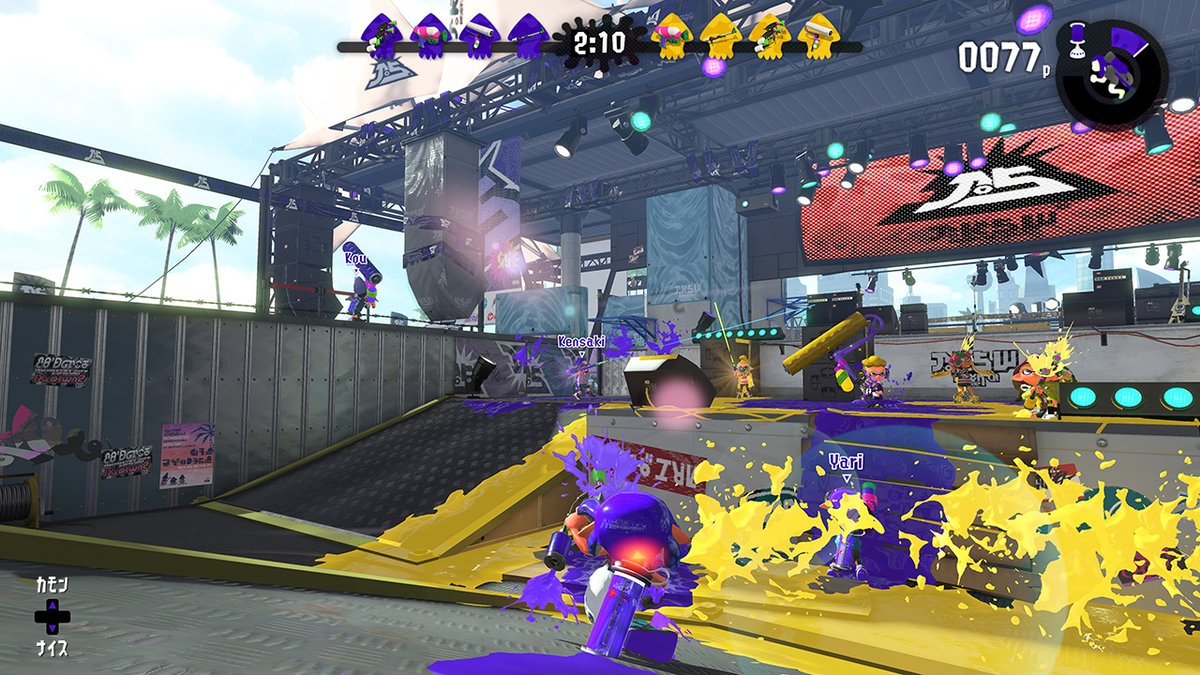
Speaking of, a highlight of the single player campaign are the bosses. While they also follow the same “find the boss’ weakness and hit it three times” Nintendo formula, they are in design and mechanics much more varied and interesting than most Nintendo bosses in many years. Whether fighting a monster wielding a paint roller riding a unicycle or a possessed bread oven, they are all exciting, difficult and delightfully laughable.
As good as the single player campaign is, multiplayer is still the heart of Splatoon. Turf War, where you must cover the maps with more ink than the opposing team to win, returns as the premier mode, but the most significant addition is the “Salmon Run” co-operative horde mode. This mode, faces teams of four squids against a range of fishy foes in waves, with bosses appearing regularly to take down. Grab the golden eggs from bosses within the time limit and you win.
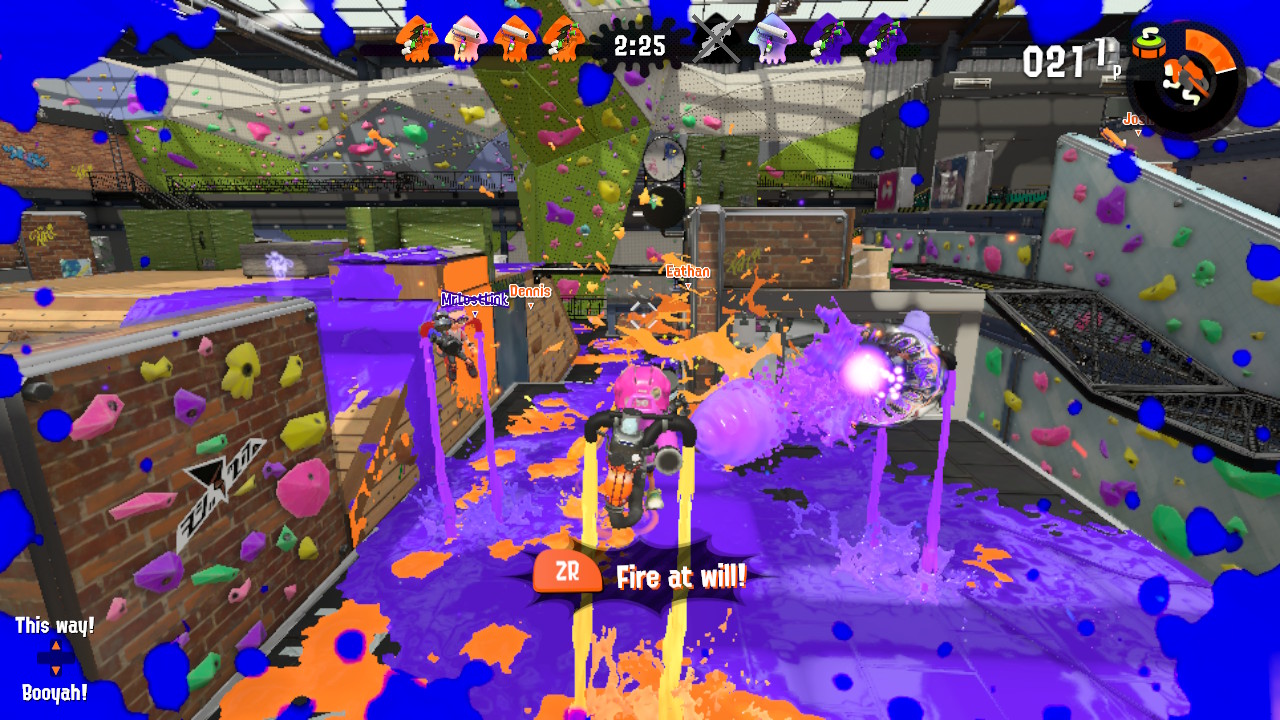
It can be played with friends or with matchmaking, but in matchmaking there’s no communication with randoms except for “Over here” or “Booyah”, which although it helps, could be improved. It seems like it’s a deliberate move by Nintendo though, so I don’t expect it to change. Overall it’s a welcome addition to the game, and plays differently enough that it makes a decent break. That said, at least on the easier Levels it isn’t as deep or complex as something like Gears of War’s popular horde mode.
Other modes return as ranked battle exclusives, and this is where some of the improvements to the original game begin to peter out. Limiting modes to a certain rank is troublesome, and limits some really great experiences behind a scary “ranked” section that many will likely never click on. I feel Nintendo should have taken note from its own recently-released ARMS or the juggernaut that is Overwatch, and cycled through the three main modes in both ranked and unranked matches. Not only would this make the game more interesting, but the modes are so different from one another that going into them untrained in a ranked match can be frustrating.
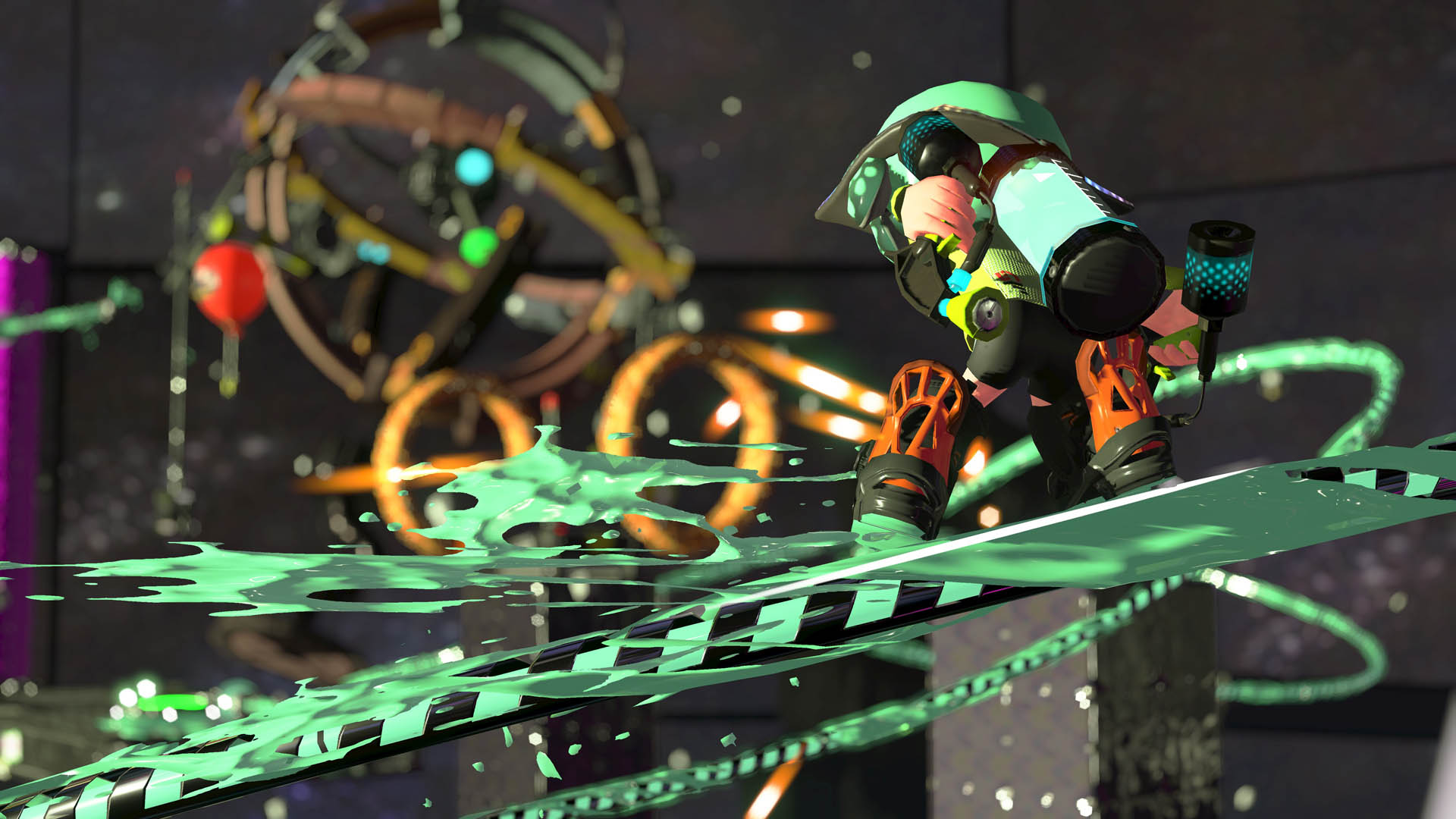
But when you do get into a match, there are some new weapons and abilities. A favourite of mine are the Dualies, two relatively weak automatic pistol type weapons that give you a double dodge roll, which is extremely useful for getting out of tight situations. There are new perks for weapons and new abilities, including some fun special attacks. Splat chargers, the equivalent to sniper rifles, receive a buff but still feel less than they could be.
Despite being told by a Nintendo representative at the Switch reveal event back in January change was coming in Splatoon 2, you still can’t swap weapons between or prior to consecutive matches. Some maps are made for or are much better with certain weapons, making this oversight maddening. While you can save armour and weapon loadouts with Amiibo, you still have to go back to the lobby to do so. It’s another one of those simple game design changes that players have been clamouring for since the original’s release that have gone unaddressed. It’s not a deal-breaker by any means, but one of the signs that Nintendo is still unsure of how to approach online even fifteen years since Xbox Live was launched.
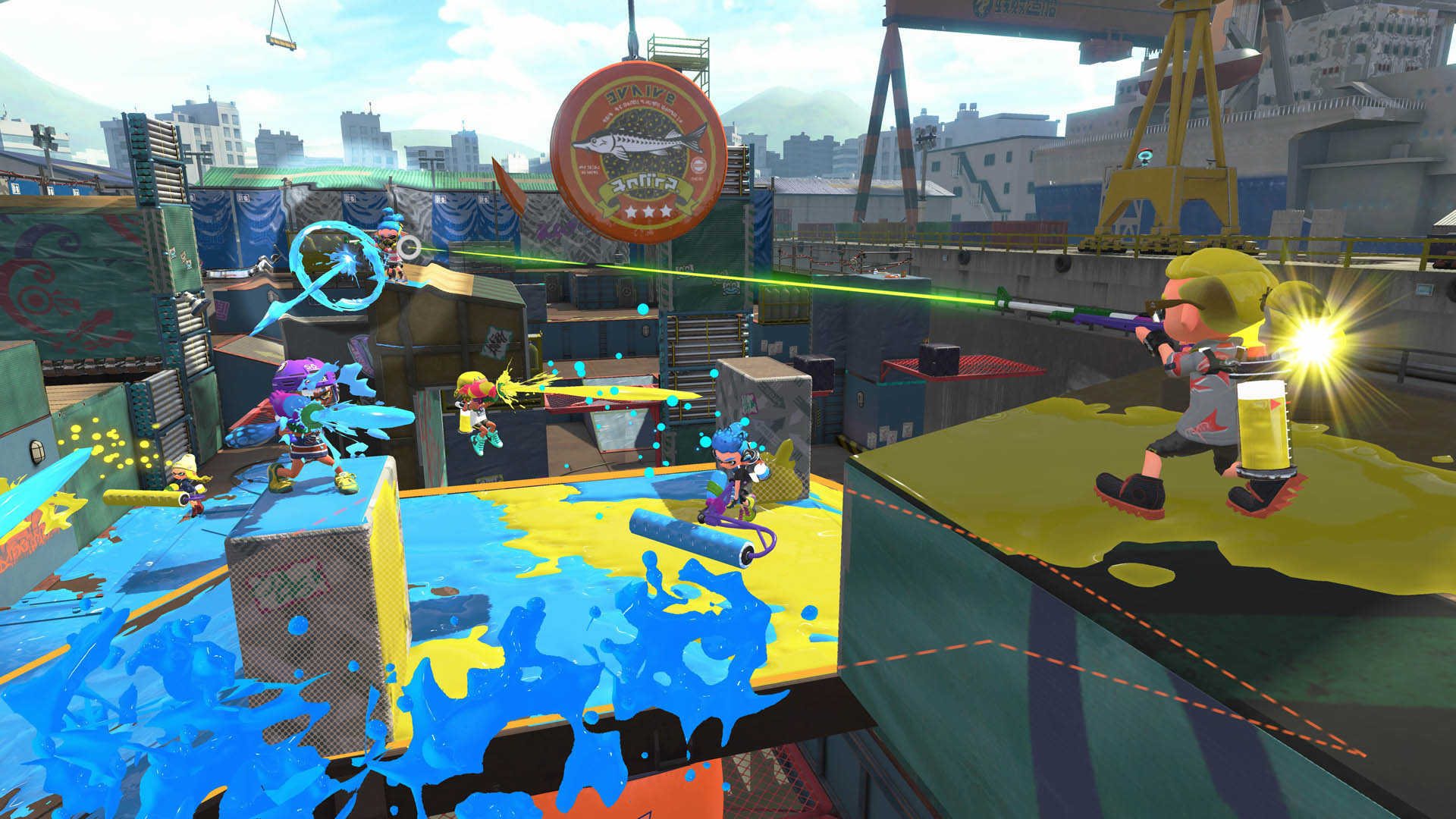
Splatoon 2 defaults to motion controls, which feel better than using the Wii U’s Gamepad, and I was grateful that you now have the option of playing with a variety of controller types. You can also specify different sensitivity for playing in handheld, tabletop and docked modes, which is extremely welcome. This means that in handheld mode you can have higher sensitivity, so you don’t have to tilt the screen out of comfortable viewing angles.
The music and soundtrack of Splatoon 2 is also excellent, with a range of energetic tunes that cover more genres than the original’s. You can play a music rhythm music game or just listen to tracks from the game, which really should be its own standalone game.
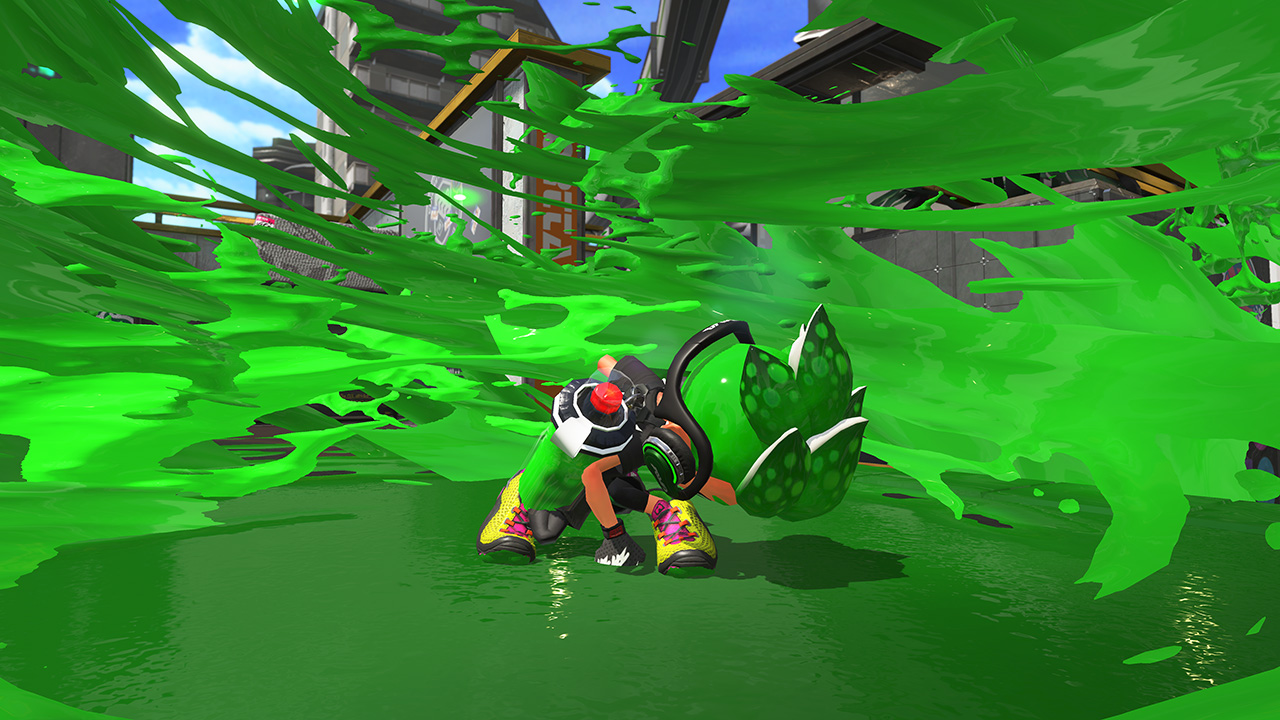
Resolution has been increased compared to the original too. Splatoon 2 features a dynamic resolution mode that prioritises maintaining 60FPS but can go all the way up to 1080p. There’s more detail in textures, and various effects have been improved. Ink has a slick new look, with upgraded lighting and even specks of metallic highlights.
Splatoon 2 takes advantage of the Switch’s unique features, such as local wifi play. There’s also LAN play with adapters, and online solo and team play. Voice chat makes its debut on the Switch with Splatoon 2, but it’s implemented in the worst possible fashion. It forces you to use a smartphone app for voice chat, with game audio still coming from the Switch itself. You must invite people in game to join you in app, where you can then try and join up in game again. It’s a mess, and frankly I’m hoping for a complete refresh of this functionality in the future.
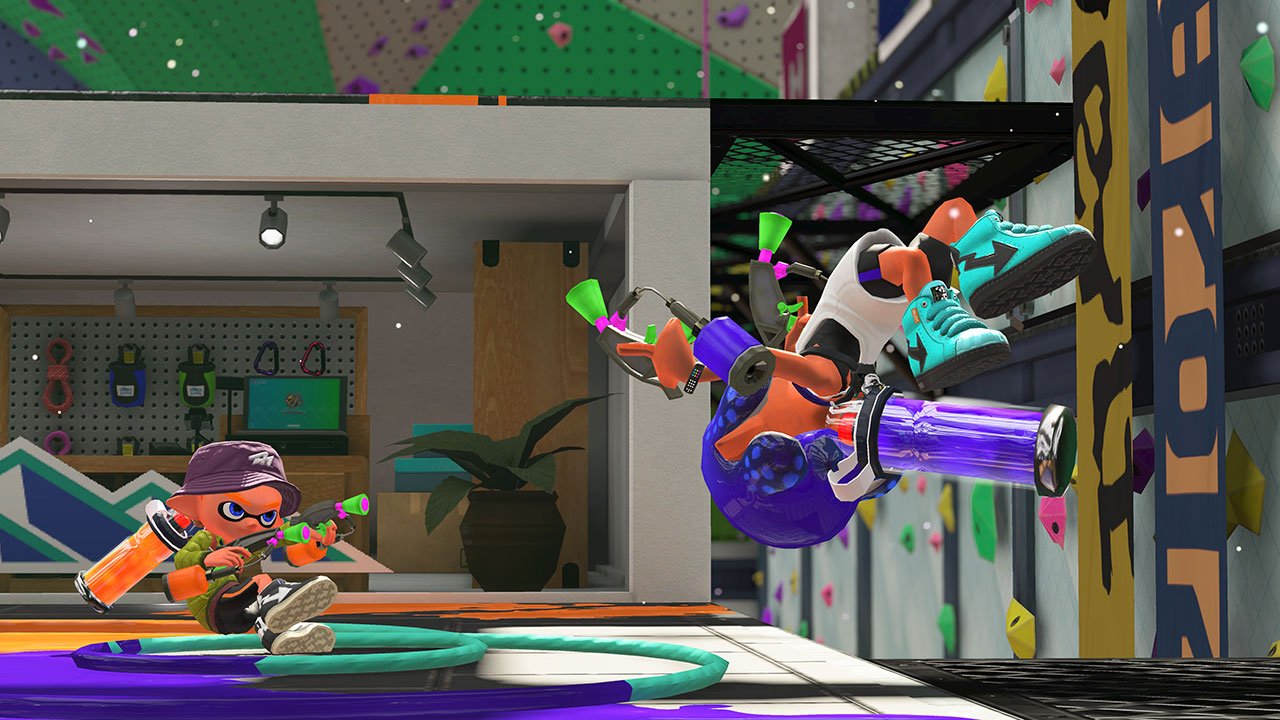
A bright, fast-paced, gorgeous game, Splatoon 2 is sure to be on high rotation on player’s Switches for months or years to come. It takes the original game, polishes it and adds just enough new features to make this a must-own game. It falls short in almost anything to do outside matchmaking (which has been almost completely rock-solid), but remains different enough to make a distinctive mark in a world filled with very high quality competitors.
It’s a standout title, that works just as well on the large TV as in the palm of your hand. The pitch sounds so simple – “take Splatoon, make it prettier, slap together a new single player and make it portable” but that is utterly compelling in a way that all the best Switch games are. It’s a must-buy for Switch owners, even those who usually shy away from competitive online games. Nintendo have proven that this is a franchise that deserves to stay, grow and splat its way to victory.
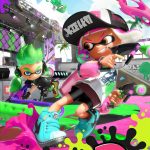
Released: July 2017
Rating: PG
Platforms: Nintendo Switch
Genre: Action
Developer: Nintendo
Publisher: Nintendo</p

